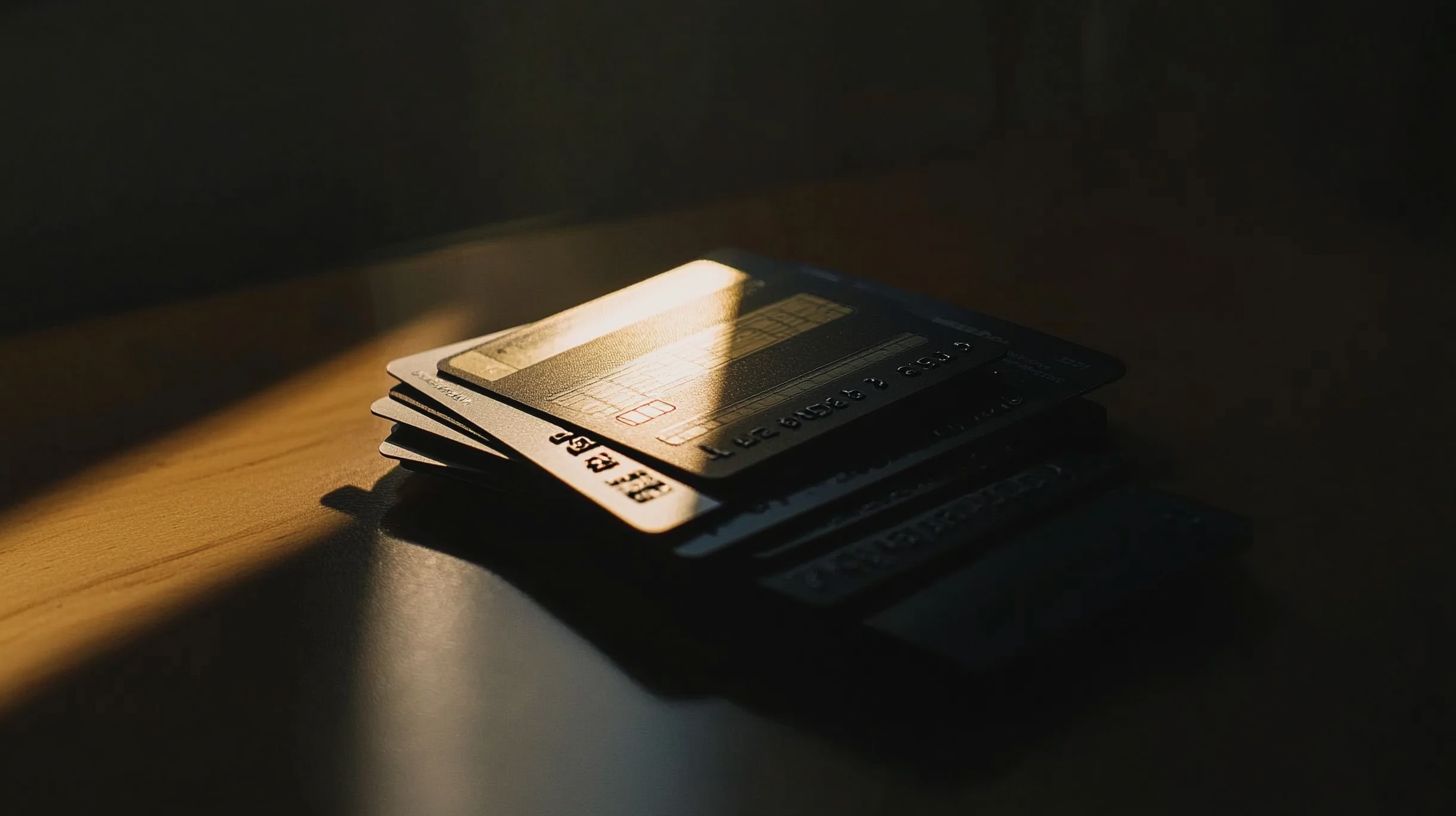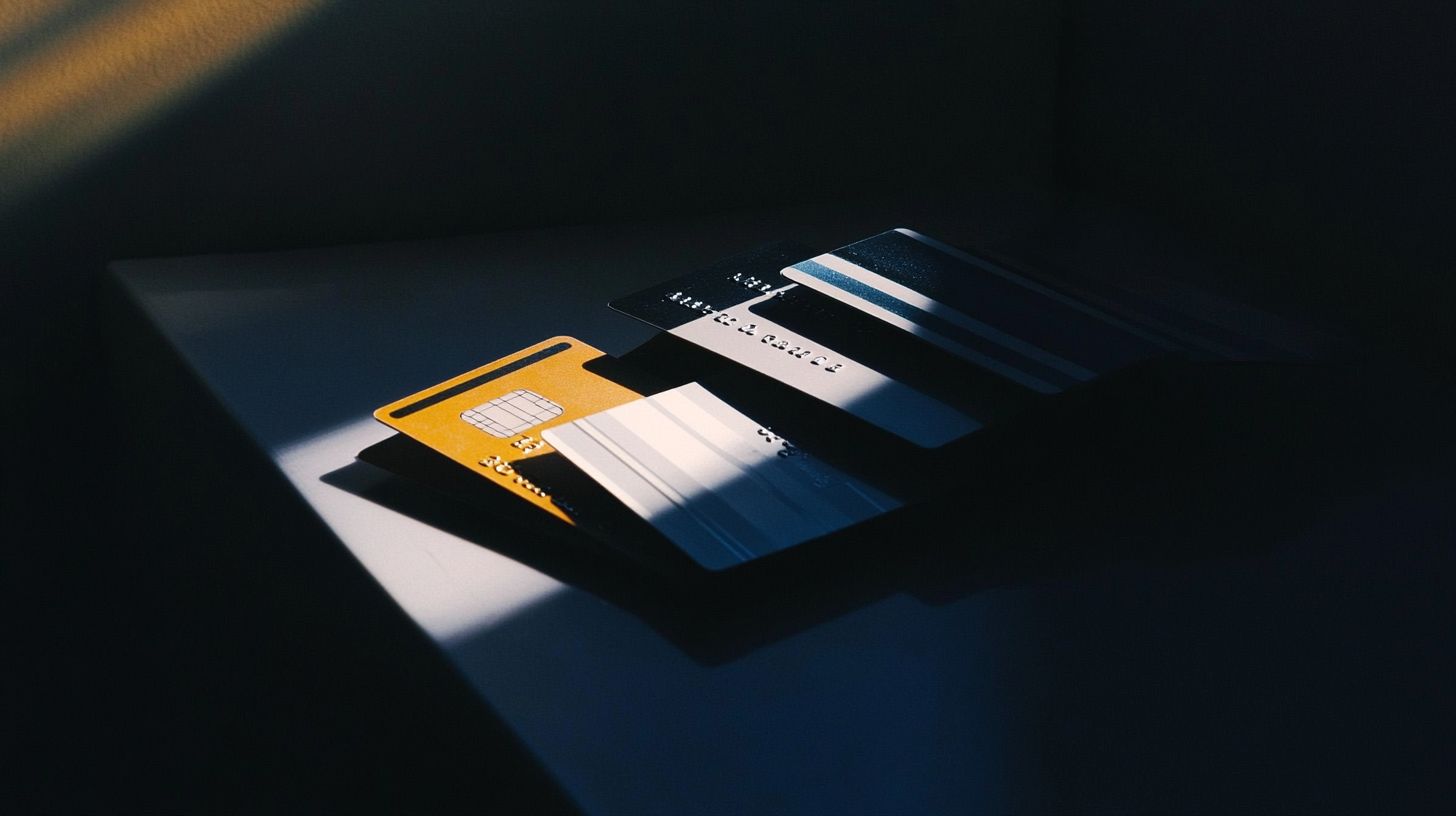
Are you struggling with credit card debt because of minimum payments? A key fact to know is that making only the minimum payment can lead to more debt. This article will guide you on how to manage your credit card payments better and avoid falling into a deeper financial hole.
Keep reading for valuable insights.
Key Takeaways
- Making only the minimum payment on a credit card stretches out the debt repayment time and increases total interest paid. For example, paying off a $5,000 balance with a 19.99% APR by making minimum payments could end up doubling the amount of interest paid over time.
- Adding extra money to your monthly credit card payment can significantly lower both the repayment period and total interest costs. As an illustration, adding just $100 more than the minimum payment each month could cut down years from your debt repayment timeline and save thousands in interest.
- The Snowball and Avalanche methods are effective strategies for reducing credit card debt faster. By focusing on clearing smaller debts first or targeting those with higher interest rates, these tactics help manage payments more effectively.
- Automatic payments that exceed the minimum requirement can help reduce principal balances more quickly, thereby lowering overall interest costs and shortening the debt repayment period.
- Seeking professional financial advice is beneficial when managing credit card debt becomes overwhelming. Financial advisors can provide personalized plans that may include consolidating debts at lower interests or adjusting spending habits to free up more money for quicker debt elimination.
Understanding Credit Card Minimum Payments

To get a handle on credit card debt, it’s essential to grasp what minimum payments are. These small amounts, set by your credit card firm, barely cover the interest and fees.
Definition of Minimum Payment
A minimum payment on a credit card is the smallest amount you must pay each month to keep your account in good standing. Paying this amount helps you avoid late fees and keeps your annual interest rate from going up.
It also stops credit bureaus from marking your payment as late, which can hurt your credit scores.
Making the minimum payment ensures you get to enjoy the benefits and rewards that come with your card. This includes keeping things like cash back options or points for purchases active.
Keeping these rewards means you still have access to some perks even while managing debts.
How Minimum Payments are Calculated
Credit card companies often set minimum payments at a percentage of your total balance. For instance, if you owe $4,000 on your credit card, and the company asks for 3% as the minimum payment, you will need to pay $120 that month.
This method ensures that borrowers are consistently paying off a portion of their debt each month, making it manageable for those who may not afford to clear the full amount at once.
Sometimes, credit card firms use an alternative way to figure out your minimum payment. They might ask for a flat rate of $10 plus any interest charges from the previous period. If your credit card has an annual interest rate of 19.99%, and you have a balance of $4,000, this calculation method would require you to pay at least $27 based on the interest accrued over time.
This system helps keep monthly payments predictable yet contributes toward slowly reducing outstanding balances while covering part of the interest costs accumulated during that period.
The Impact of Making Only Minimum Payments

Making only the smallest allowed payment on credit card bills can lead to a mountain of debt. It also hurts your credit health, making it hard to get loans in the future.
Effect on Total Debt
Paying only the minimum on credit cards greatly increases the total debt due to high interest rates. For example, a $5,000 balance at a 19.99% annual percentage rate (APR) with a 3% minimum payment stretches out the time to pay off this balance to nearly 21 years.
Over this period, the total interest paid skyrockets to $5,983.91. This situation demonstrates how making minimal payments forces consumers into a cycle of debt that is hard to break free from.
On the other hand, adding an extra $100 monthly on top of the minimum payment can drastically reduce both the repayment time and interest costs. Specifically, this approach cuts down the time to clear the debt to just over three years while saving almost $4,500 in interest payments ($1,491.87 paid in interest).
These figures underscore why financial advice often stresses paying more than just what’s required each month on credit balances. Next up: Influence on Credit Score.
Influence on Credit Score
Moving from the impact on total debt, it’s essential to understand how consistently making only the minimum payment affects your credit score. Your payment history benefits when you pay on time.
Yet, if you rely solely on minimum payments, your credit utilization ratio—how much of your available credit you are using—might go up. Experts suggest keeping this ratio below 30% of your credit limit to maintain a healthy credit score.
Credit scoring models like FICO and VantageScore take note of high utilization rates. A spike in this rate sends a signal that you might be overleveraged, which can hurt your score.
Regularly checking your credit report can help you monitor how your card usage impacts these scores. Keeping balances low and managing debts wisely will favorably influence both your FICO score and overall financial health.
Strategies to Avoid the Minimum Payment Trap

To steer clear of the minimum payment pitfall, opt to pay more than the least amount due on your bill. Set up automatic transfers that exceed the minimal requirement to ensure you consistently reduce your debt faster.
Paying More Than the Minimum
Contributing more than the bare minimum on your credit cards is a shrewd strategy to decrease your debt rapidly. Each additional dollar invested in your balance diminishes the main sum faster, ultimately resulting in less interest paid over the duration.
This strategy benefits Canadians by steadily reducing their debt and simultaneously improving their credit score by keeping their credit utilization ratio ideally under 35%.
Efficient methods like the debt snowball or avalanche technique can optimize this process. Essentially, these strategies involve clearing off debts from smallest to largest or addressing those with steepest interest rates first.
By devising a budget that sets aside extra funds for debt repayment, Canadians can appreciate the dual advantages of faster debt payoff and minimized interest expenses.
Excess payments invested in credit card balances curtail overall interest expenses and accelerate the journey to being debt-free.
Setting up Automatic Payments Above the Minimum
Establishing auto-payments beyond the minimum for credit cards could accelerate your debt clearance. Selecting an amount exceeding the minimum due automatically decreases the primary balance speedily.
This move cuts back on the interest that accumulates over time and also reduces the time you’re in debt. Many banks currently provide user-friendly online banking tools that enable you to organize this with minimal clicks.
Leveraging these automatic systems implies never skipping a payment date, which is key for preserving an optimal credit history. Given that making more than one payment within a billing cycle can further reduce interest charges and hasten balance reduction, scheduling extra automatic payments during the month when feasible augments these advantages.
This tactic showcases responsible borrowing actions to financial entities and might favorably affect your credit reports in the long run.
Methods to Reduce Credit Card Debt

To cut down credit card debt, many turn to different strategies. Two popular approaches include the Snowball Method and the Avalanche Method.
The Snowball Method
The Snowball Method commences by arranging your debts from the smallest to the largest balance. The strategy prioritizes the smallest debt first while maintaining minimum payments on the rest.
As each debt is settled, you transition to the next smallest one. This approach induces momentum—like a snowball rolling and growing bigger—as you address each subsequent debt.
Clearing smaller debts provides quick psychological victories, enhancing confidence in handling personal finance tasks such as credit card interest and lump sum payments on larger debts in the future.
As each small debt is eliminated, increased funds become available to concentrate on larger balances, making this method efficient in decreasing total debt and improving your credit check scores over time, eliminating the necessity for complex strategies or financial terminology.
The Avalanche Method
The Avalanche Method focuses on ordering debts from highest to lowest interest rate, then paying off the debt with the highest rate first. This strategy targets reducing the amount of interest you pay over time.
It requires discipline and a focus on tackling high-interest credits like credit cards or personal loans before moving onto those with lower rates. By doing this, Canadians can save money and clear their debt faster.
After mastering the Avalanche Method, one might also consider other strategies for managing debts efficiently.
The Real Costs of Minimum Payments
Paying just the minimum on credit cards leads to more interest over time. This makes it take longer to pay off the balance.
Interest Accumulation Over Time
Interest accumulation over time can significantly increase the cost of credit card debt. For instance, consider a scenario where you owe $5,000 on your credit card with an annual percentage rate (APR) of 19.99%.
If you only make the minimum payment of 3%, it would not just take longer to clear your balance but also cost you much more. In fact, the total interest paid on this amount would skyrocket to $5,983.91 over time.
This example highlights how compounding interest works against you by adding more and more charges to your original debt.
Paying slightly more each month can lead to faster debt payoff, saving thousands of dollars.
Making larger payments than the minimum required reduces the principal balance quicker and as a result, decreases the amount of interest accumulated. This strategy is a smart way to manage your finances better and avoid falling into a deep pit of endless payments that stretch far into the future.
By understanding how interest accumulates over time on debts like these and taking action early, Canadians can save themselves from paying double or even triple what they originally borrowed.
Longer Debt Repayment Period
Paying only the smallest amount on your credit card extends the duration required to settle your debt. For example, a $5,000 balance at 19.99% interest with a 3% lowest payment could require almost 21 years to fully pay off.
This protracted duration implies you end up paying considerably more than the original amount borrowed.
Implementing extra payments beyond the minimum can significantly decrease both the time of repayment and total interest paid. Visualize reducing decades of debt into just a couple of years by modifying your monthly payment amount.
This strategy improves your financial health and also fortifies your stance against possible credit score impacts and savings account depletion due to extended high-interest payments on debts like mortgages, auto loans, or student loans.
How to Manage Minimum Payments Effectively
To handle your credit debt smartly, create a budget that sets aside more than the lowest required payment each month. If you’re struggling, reaching out to a financial advisor can help map out a plan that works for you.
Budgeting for Higher Monthly Payments
Creating a budget for higher monthly payments starts with looking at your finances. Pull together all your bills, including credit card statements, mortgage or rent, insurance premiums, and any loans.
Pay special attention to your credit cards since issuers apply extra payments to the highest interest balances first. This strategy helps reduce the total debt faster by lowering the amount of interest you pay over time.
Next, carve out space in your budget for additional funds toward these debts. Use tools like a simple spreadsheet or a budgeting app to track where every dollar goes. Prioritize paying more than the minimum on credit cards with the highest APRs (annual percentage rates) since this will save you money in long-term interest charges.
If possible, set up automatic payments above the minimum required to ensure you consistently chip away at your debt each month without having to think about it too much.
When to Seek Professional Financial Advice
Getting professional financial advice is crucial if managing debt or making substantial payments on your credit cards feels too challenging. A financial advisor can collaborate with you to form a debt repayment plan that aligns with your unique situation.
They utilize strategies like the debt snowball method, prioritizing smaller debts initially for immediate victories, or the debt avalanche method, aiming at debts with high interest rates first.
Both tactics strive for efficient debt reduction.
Professionals could also suggest other strategies, like merging your debts into a less expensive loan or making changes to your current spending habits to save more money for paying off debts quicker.
Their expertise in understanding terms like HELOC (Home Equity Line of Credit), which could provide cheaper interest rates compared to traditional credit products, is highly beneficial.
They are well-informed about laws and regulations that impact Canadians’ finances, like the Credit Card Accountability Responsibility and Disclosure Act of 2009, ensuring any advice given aligns with present financial standards.
“Expert guidance can move you from feeling trapped in a cycle of minimum payments, setting you on the path to lasting financial stability.
Conclusion
Making only the minimum payment on credit cards results in higher costs over time. This is due to increased interest and extended repayment periods. Aim to contribute more than just this minimum amount whenever feasible.
Using strategies such as the Snowball or Avalanche can aid in quicker debt reduction. Efficient management of these payments helps maintain robust credit health, preserving funds that can be redirected to objectives or emergencies rather than high interest fees.
FAQs
1. What does minimum payment on credit cards mean?
Minimum payment is the smallest amount you can pay on your credit card account to keep it in good standing with lenders like Capital One Bank, American Express, or J.P. Morgan.
2. Why is making only the minimum payment not a good idea?
Making only the minimum payments can lead to negative amortization and lower FICO credit score because most of your money goes towards interest rather than paying off debt.
3. How is the minimum payment calculated by banks such as Bank of America or Citi?
The calculation for minimum payments varies among banks but usually includes a percentage of your total balance plus any fees or penalties applied under rules like Credit Card Act of 2009.
4. Can I use my debit card or checking account to make a minimum payment on my credit card?
Yes, you can use either a debit card linked to your checking account, ATMs, or even online banking system provided by institutions like JPMorgan Chase Bank, N.A., to make payments.
5. Is there an impact on mortgage rates if I just pay the minimum amount due on my credit cards?
Yes! Continuous minimal payments can affect your lending credibility which could result in higher mortgage rates from mortgage lenders when applying for financing options such as refinance.
6. If I’m unable to make even the bare-minimum payments what should I do?
If you’re facing financial hardship and cannot meet even minimal obligations towards debts including those from Discover and other creditors; seeking advice from entities like CFPB (Consumer Financial Protection Bureau) about bankruptcy or debt settlement may be beneficial.








